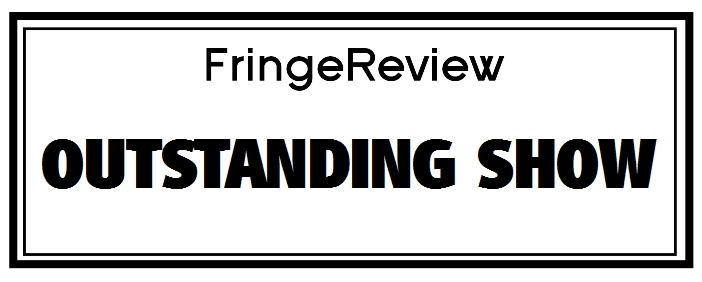Hamilton Fringe 2016
Low Down
The real-life story of the murder of Linda Andersen is told through physical theatre with simple staging and a chopped-up narrative by two multi-talented actresses. And – spoiler alert – it’s very very good.
Review
The eleventh – and final – show I catch at this year’s Hamilton Fringe is the cherry on top of an already delicious cake. This is one of the most well-baked and richly-layered slices of physical theatre I’ve had the pleasure to digest in a long while.
The Latin for “cake” – just to stretch the extended metaphor a little further – is “placenta”, a name we nowadays give to the only disposable human organ, the bulbous sac which connects the pregnant mother to the baby growing in her womb. It can provide the unborn baby with food for a significant time if the mother were to stop eating, and removes waste products and poisons from the baby’s blood supply.
One can imagine that the placenta had to work overtime during the incubatory period of the two sisters depicted in The Bathtub Girls. Their mother, we learn, was a bit of a drinker, and judging by the recklessness with which she sozzled herself through the sisters’ childhood, we can surmise she didn’t take the doctors’ recommendation of abstaining during pregnancy. The sisters endure ill-treatment and neglect for a good decade and a half before plotting to take matters into their own hands.
As we know from films such as Shallow Grave, and from episode 2 of series 1 of Breaking Bad, equal partners in a gruesome crime rarely have identical roles to play, and the disparity can result in great trauma and conflict, as if the burden of the crime itself wasn’t enough. This – rather than the dysfunctional mother-daughters relationship that forms the story’s backdrop – provides the main drama in the piece. What seems at first glance to be the perfect crime gradually falls apart at the seams as the girls’ immaturity – and presumably remorse, though this is less fully explored – gets the better of them.
Normally at this point, I’d credit the writer, director and performers of a piece of such high quality separately, and seek to disentangle their contributions and compliment them on clearly working so well together as a team. And then I look back at the festival programme, to see who deserves all this praise, and blow me if the writers and directors and performers weren’t the very same people! And here I am, having told umpteen students and peers alike for the past several years that by all means do write your own show but you really must get a director in who can provide a fresh pair of eyes. But nope, these girls have proved me wrong. They’ve done it all themselves, and they’ve done it marvellously. Natalia Bushnik and Robin Luckwaldt Ross, you have my utmost respect.
Their script really is very impressive. The narrative is non-linear, and the word-choice more poetic than anything I can muster to describe it. Though the actors play the two girls throughout, they do so from various planes of omniscience, and from ever-shifting temporal perspectives, without ever confusing us about where or when in the story we find ourselves. The play succeeds in this feat by stripping the story down to its essentials, not trying to cram in too much detail or over-complicate the ethical questions of guilt and mitigation.
The complicity between Natalia and Robin is truly phenomenal. The text is punctuated with moments of choreography more synchronised, and more infused with meaning, than much of what I’ve seen amongst top professional physical theatre and contemporary dance companies. Their understanding of pace, of levels of tension, of letting the silences ring out as loud as the words, and of reeling the audience in and keeping them hooked, are top-notch and inspirational. The sheer breadth of the storytelling they achieve, in space, time and emotion, is all the more impressive when you realise that the playing area they use throughout is no more than about a metre and a half square, and the only prop they have to help them is a white bedsheet. In our modern cultural landscape, with its emphasis on ever increased technological complexity, media cross-over and in-yer-face short-attention-span storytelling, it is incredibly refreshing to see all that stripped away, and be reminded that so much can be said with so little.
When the umbilical cord is cut, and the placenta falls away, and the physical tie between mother and child is ruptured, the child becomes free to fend for itself and shape its own destiny. The emotional tie that takes the placenta’s place is (usually) one of the strongest and longest-lasting known to humanity. To see that tie broken too, and with such catastrophic consequences, is deeply shocking. While the abstractions through which the story is distilled allow us a degree of remove from the horror, they also channel the tale deep into our subconscious. The skilful execution of this show delighted my senses for an hour, but the skilful execution of Linda Andersen will rock me to the core for a long time to come.



















































